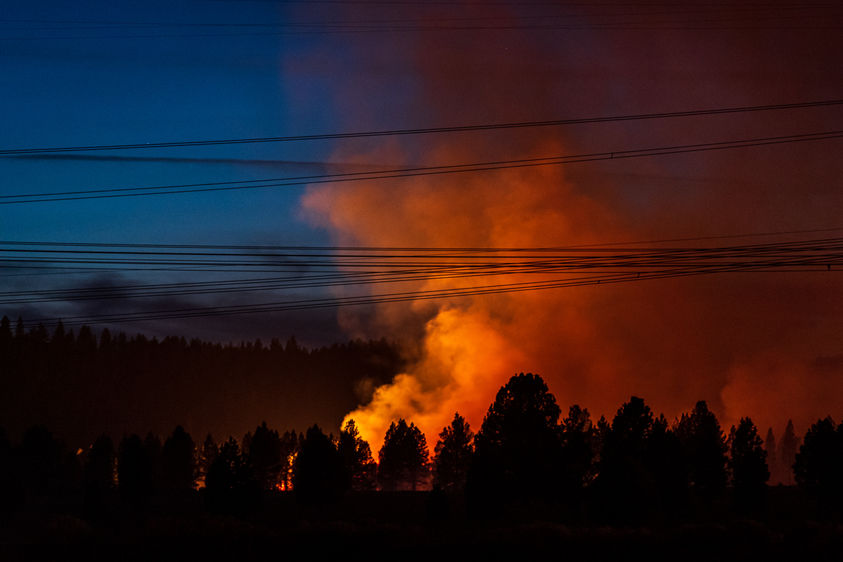Air Quality Across Oregon Is Improving Despite Ongoing Wildfires

Smoky skies over the St. Johns Bridge in Portland in 2020. This year's wildfire haze over the city looks to be much more short-lived.
Image: WEBB SHOW/Shutterstock
Six active wildfires are still burning in Oregon, but the state’s two largest power companies, Portland General Electric and PacificCorp, have restored all power to 44,000 customers statewide after precautionary shutdowns over the weekend, a move aimed at avoiding potential new fires sparked by unusually high wind speeds.
The cautious approach by the power companies comes just over two years past the anniversary of 2020’s Labor Day fires, which brought devastating winds of up to 92 mph to the Cascades and left Portlanders coping with poor air quality for more than a week. At least some of those fires were sparked by downed power lines.
The good news: Monday morning’s light rain and relatively high humidity are great indicators of a return to normal air quality for Portlanders. Though the National Weather Service never put an official air quality advisory into effect (they say the air quality index or AQI never topped “moderate” levels over the past few days), they do warn that air pollutants in smoke, regardless of how concentrated, can cause burning eyes, a runny nose, and aggravate heart and lung diseases as well as other serious health conditions.
The source of some of Portland's smoky air is coming from Lane County’s Cedar Creek Fire (15 miles east of Oakridge), which has burned 87,000 acres, evacuated three towns, and is not yet under control.
However, John Bumgardner, a meteorologist at the National Weather Service in Portland, says air quality across the state “should be improving with today’s onshore flow. The winds have turned westerly and now we’re getting marine air as opposed to all of that smoke filled air from the fires in Eastern Oregon,” he says, referring to the Jones Creek and Double Creek fires on the Oregon-Idaho border, as well as the Crockets Knob fire in the Malheur National Forest.
“The rain this morning helped knock some smoke out of the air, too,” he adds. “We should be on the upswing—at least for the foreseeable future.”
The current fires are significant, but relatively small-scale compared to those of two years ago, which burned over a million acres and left parts of the state with unheard of AQI levels touching 500—the highest possible register on the index.
There are two additional fires still burning in southern Oregon: TheRum Creek fire in Medford and the Van Meter fire near Lakeview on the state’s southern border. Closer to Portland, authorities say the 25-acre Milo McIver fire in Estacada is now under control.
Despite the eerie gusts on Friday and Saturday, Bumgardner says this weekend’s winds weren’t alarmingly high, though they are the highest speeds we’ve had since 2020’s extreme event, reaching 56 miles per hour in the Gorge and 60 miles per hour in the Cascades compared to 2020’s 92 miles per hour. And the forecast for the next eight days looks relatively calm.
“Hopefully we're done with that,” says Bumgardner.




